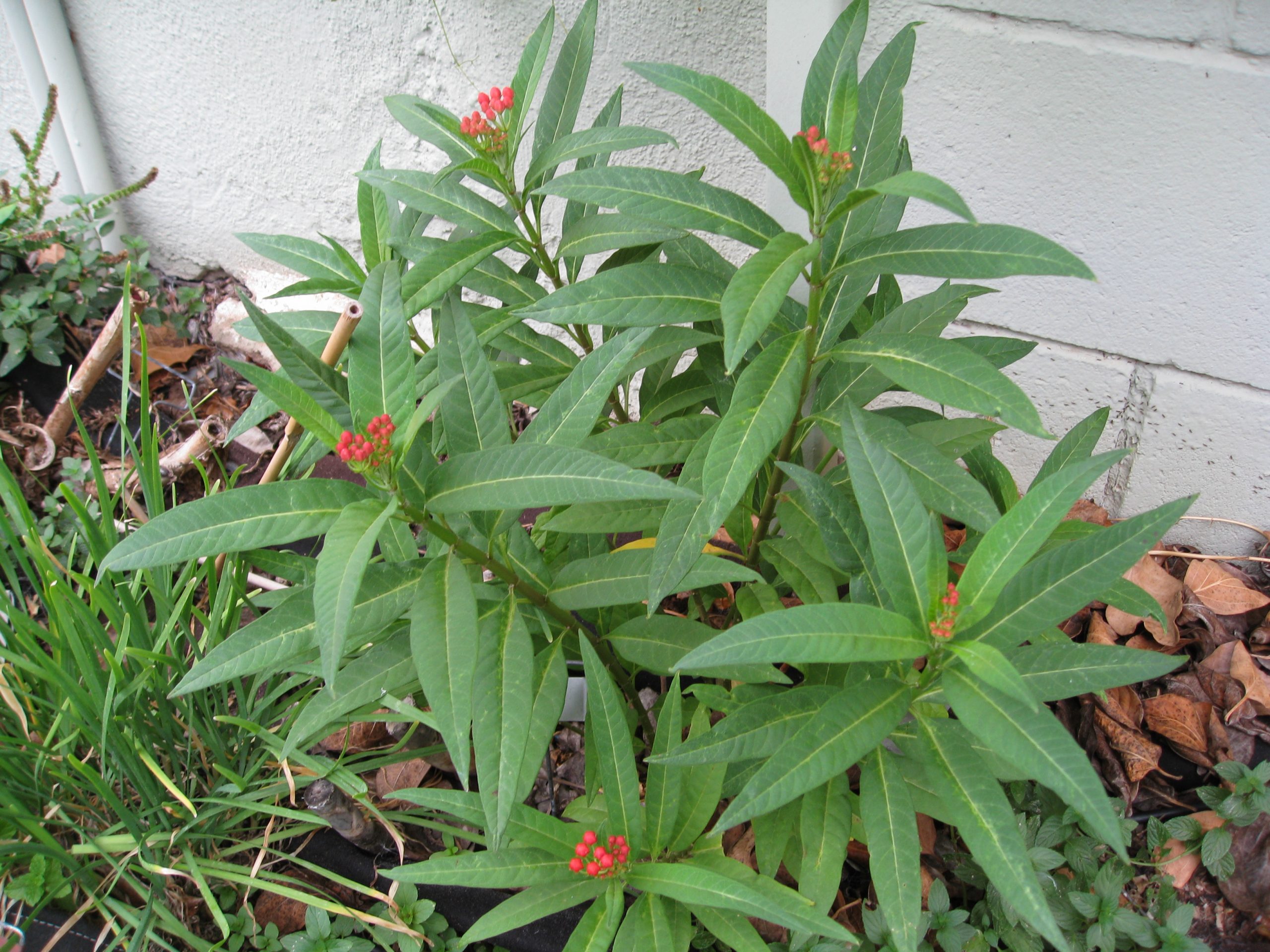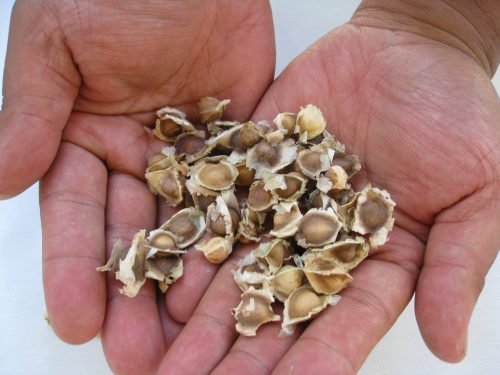I’ve been hearing it for awhile, especially from the native plant enthusiasts and experts among us: pull out non-native milkweeds, it’s making our Monarchs sick. What? Aren’t we supposed to be growing milkweed for Monarch butterflies, you ask. The answer is yes, but it’s more complicated than that.
Nobody ever really explained to me why we need to stop growing non-native milkweeds, just that we need to stop. But finally something came across my desk to explain it succinctly. Recent studies (shared with me by Joanne Poyourow of Environmental Change Makers) show that certain milkweeds that we’ve all been growing here in the U.S. are unfortunately a host for parasites that don’t die off unless the plant dies off. The problem is that many places don’t get a killing frost, so these plants don’t die off. So, the parasites persist from year to year.
Monarch butterfly caterpillars are ingesting the parasite when they consume the plant, which then weakens the caterpillar-turned-butterfly (once it emerges from a chrysalis). The infection reduces the distance butterflies can migrate or cuts their journey short altogether.

Science Magazine reported on the study:
“… it turns out that year-round tropical milkweed presents an even more direct threat to the butterflies. Milkweed hosts a protozoan parasite called Ophryocystis elektroscirrha (OE). As caterpillars, monarchs ingest the parasite along with their normal milkweed meals, and when they hatch from their chrysalises they are covered in spores. ‘It’s a debilitating parasite,’ Satterfield says. Infected monarchs are much weaker than their healthy counterparts and don’t live nearly as long. In fact, if an OE-infected monarch tries to migrate, it will probably die long before it arrives in central Mexico…The work proves ‘absolutely definitively’ that tropical milkweed is threatening the monarchs and their migration.”
You can read about it here. While you’re at it, take a look at this graphic that shows how Ophryocysitis elektroscirrha travels with Monarchs through their metamorphosis and beyond.
What to Do?
So, ladies and gentlemen gardeners, it’s time to pull out your milkweed unless it’s native to the U.S. No tropical milkweed from now on. If you aren’t sure which species you have planted, play it safe and replant with a native variety. Check with your native plant society for resources for native seeds or plants. Don’t have one near you? Then start with The Xerces Society or this awesome Milkweed Market reference from MonarchWatch.org.
Look up your region, choose the appropriate milkweed and search the web for vendors of said milkweed. MonarchWatch.org also offers free seed and plants. Click the link above for details.
Local Angelinos can get 3 types of California native milkweed from Theodore Payne Foundation:
Asclepias eriocarpa
Asclepias fascicularis
Asclepias speciosa
No excuses…
Every time I’ve told a client or friend that they should pull their non-native plants because they are making Monarchs sick, that person has become defensive, stating “Oh, well, this plant is covered with caterpillars and they don’t seem to be bothered one bit.” Clearly a parasite is not something we can see, folks. Nor can we see the damage we’re doing immediately. On a personal note, I’ve watched caterpillars convulse and fall to the ground after munching on my milkweed (non-native). So far, I have not one chrysalis in my garden. Those plants are out now, and I’m urging you all to do the same.
Start pulling, people, and replant with natives. Let’s really save the Monarchs this time.




Oh here:
http://monarchjointventure.org/images/uploads/documents/Oe_fact_sheet.pdf
“If you already have tropical milkweed in your garden, prune the milkweed stalks to about 6 inches in height during the fall and winter months to discourage monarchs from establishing winter-breeding colonies*. Cutting back the milkweed will also help to eliminate OE spores that may be present on the plant. Re-cut the milkweed every few weeks as leaves re-sprout. ”
Opinions on this Christy? Would you advocate removal of the plant entirely and replacement, or do you think it’s possibly OK with this pruning pattern?
What I’m hearing from the California native plant people is to pull it out. I can’t help but think that cutting it all the way back would be okay, but best to replace with the right kind of milkweed for your climate.
Makes sense. Thanks Christy! I read that the toxicity of the sap on the tropical one is higher than most of the ones you listed, and that’s a possible risk with kids playing anyway… so, off it goes.
Oh man…. the milkweed in my front yard is totally the tropical stuff. Thanks for the great hint!
We actually chopped the top off our plant this year, and it grew back to a 4 foot bush over the past 3 months. Is it possible to maintain tropical milkweed by possibly cutting it back to zero every year at some point? Would that be an effective control?
I’m wondering if my gardeners did this knowing about this problem with butterflies.
Thank you so much for this post! We just discovered that we have tropical milkweed and now understand why we saw so few chrysalis in our garden despite many monarchs and caterpillars. Pulling ours out asap and re-planting natives.